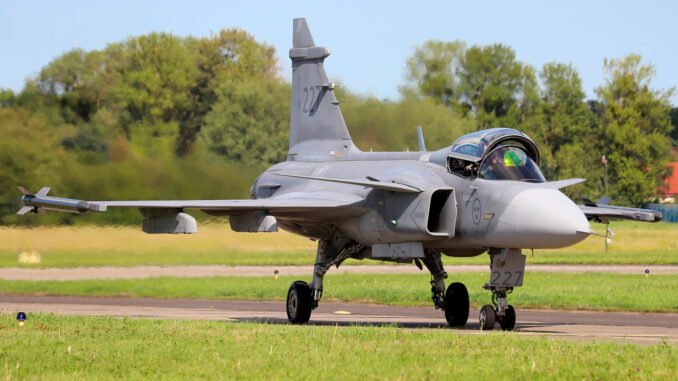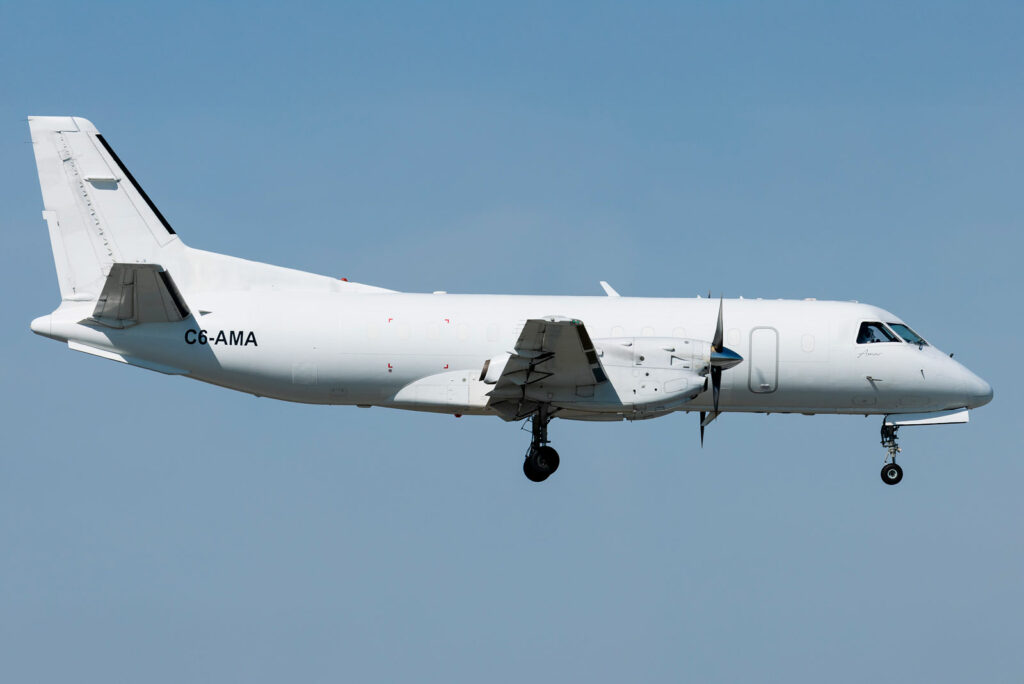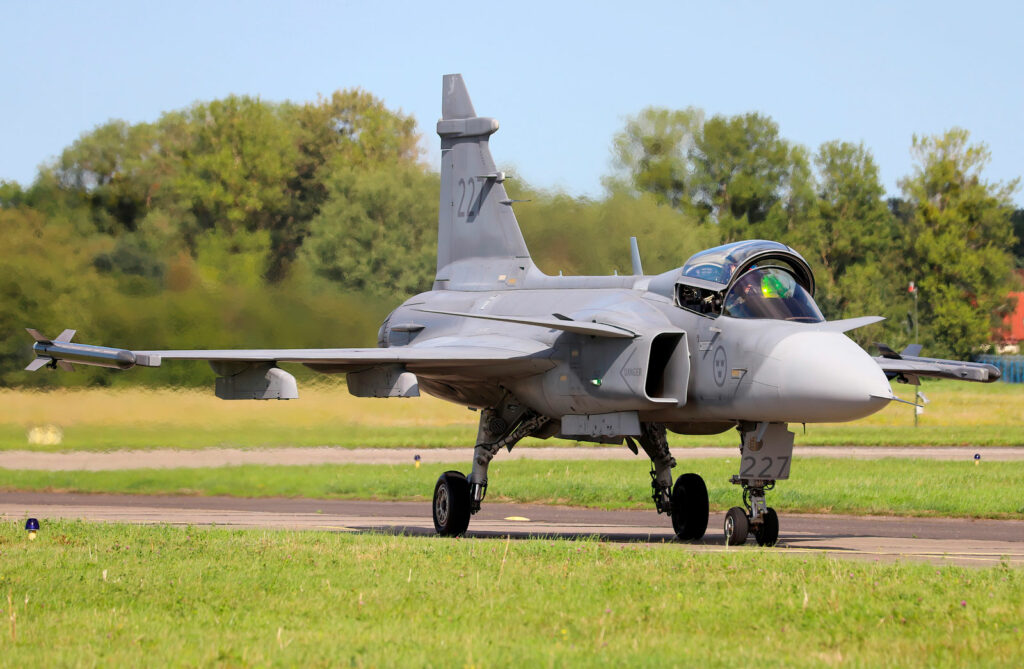
In 2024, Saab, Kongsberg and Patria reached all-time highs in terms of orders, reflecting the significant increase in military spending in Europe in the face of rising geopolitical tensions.
In 2024, European defense companies, including Saab, Kongsberg and Patria, saw remarkable growth in orders, reaching unprecedented levels. This trend is a direct reflection of increased military spending in Europe, driven by current geopolitical tensions. Orders include major contracts for advanced weapon systems, armored vehicles and surveillance systems, illustrating the determination of European nations to strengthen their defense capabilities.
Detailed analysis of Saab’s performance in 2024
In 2024, Saab, the Swedish manufacturer renowned for the Gripen fighter and Carl-Gustaf recoilless rifle, recorded a 24% increase in orders, reaching SEK 96.8 billion (approx. €8.9 billion). This takes the order book to a record 187 billion kronor. Notable contracts include the supply of Gripen fighters to Hungary, radar systems, air defense solutions and GlobalEye surveillance aircraft, as well as a record order from Poland for the Carl-Gustaf.
The Gripen fighter is renowned for its versatility and relatively low operating costs. Hungary, already a Gripen operator, has added to its fleet, underlining its continuing confidence in the aircraft. The GlobalEye surveillance system combines air, sea and land radar capabilities, providing extensive surveillance, making it a strategic asset for modern armed forces.
Saab’s order growth reflects increased demand for advanced defense systems in Europe, a trend fueled by growing regional security concerns.

Significant growth in orders for Kongsberg
Norwegian company Kongsberg also enjoyed an exceptional year in 2024, with a 44% increase in orders in the defense and aerospace sector, reaching NOK 54.4 billion (approx. €4.85 billion). The order book reached NOK 101 billion, up 54% on the previous year.
Among major contracts, Kongsberg received its largest missile order ever from the US Navy, and signed an agreement with the Netherlands for the supply of air defense batteries. These successes reinforce Kongsberg’s position as a key supplier of advanced defense systems.
The company plans to start building missile factories in the USA and Australia in 2025, a strategic initiative to meet growing demand and strengthen its presence in these markets. In addition, Kongsberg is positioning itself for the renewal of Norway’s frigate fleet, which could open up significant new business opportunities.
Patria’s notable performance in 2024
In Finland, Patria reported a 33% increase in orders, reaching €1.26 billion in 2024, taking its order book to €2.38 billion. This growth is mainly due to increased demand for its six-wheel-drive armored vehicles.
Patria, 49.9% owned by Kongsberg and the remainder by the Finnish government, is a key player in the armored vehicle and mortar systems sector. The company has signed a contract with Kongsberg to supply PROTECTOR remotely-operated weapon stations for over 300 6×6 vehicles for Sweden and Finland as part of the joint armored vehicle program (CAVS). Deliveries will begin in 2025 and continue until the 2030s.
This partnership aims to improve military interoperability between the Nordic nations and enhance logistical efficiency, in line with NATO’s vision of equipment interchangeability and security of supply.
Global military spending context
Global military spending reached a record high in 2023, with an increase of 6.8% on the previous year, totaling $2,443 billion (around €2,240 billion). This increase is the biggest since 2009, and reflects the intensification of geopolitical tensions, particularly in Europe.
The United States remains the biggest spender, with $916 billion invested in 2023, representing 3.4% of its GDP. China follows with $296 billion, or 1.7% of GDP. Russia, due to the war in Ukraine, increased its military budget to $109 billion, or 5.9% of GDP.
In Europe, defense spending increased significantly. For example, Ukraine’s neighbor Poland has recorded a 75% increase in military spending between 2022 and 2023, the highest in Europe. This trend reflects a desire to strengthen military capabilities in the face of perceived threats. Germany has also increased its spending in 2024, exceeding 100 billion euros, in line with its commitment to NATO and its Bundeswehr modernization program.
Impact of geopolitical tensions on the European defense industry
Russia’s invasion of Ukraine in 2022 marked a turning point in European defense policies. NATO countries, including those historically less inclined to invest heavily in their militaries, have reviewed their budget priorities. According to the European Defence Agency (EDA), the defense budget of European Union countries should reach 326 billion euros in 2024, up from 279 billion euros in 2023. This increase illustrates the political will to increase military resilience and develop more autonomous defense capabilities.
Some countries, such as Poland, are arguing for an increase in the minimum threshold of 2% of GDP dedicated to defense, currently set by NATO. Warsaw now spends 4% of its GDP on defense, well above the European average. The UK and France follow with spending of around 2.3% and 2.1% of GDP respectively.
The NATO summit scheduled for June 2024 in The Hague could lead to a revision of budget thresholds, and several military experts expect an increase in the minimum level of spending for alliance members.
Strategic positioning of Saab and Kongsberg on the international market
European defense companies, notably Saab and Kongsberg, have strengthened their presence on international markets, taking advantage of the rise in military spending. At Saab, 72% of the order book now comes from international markets, compared with 64% a year earlier. Strategic customers include the USA, Brazil, Thailand and other Asian countries.
Kongsberg, for its part, has seen strong demand for its air defense systems and missiles. The US Navy order is a major growth driver, as is the integration of its solutions in Eastern Europe and Scandinavia.
The opening of new plants in the USA and Australia in 2025 marks a strategic step for Kongsberg, as it seeks to secure its supply and meet growing demand in these key markets.
Military aviation and the prospects of new fighter programs
In the aeronautical sector, Saab continues to focus on the Gripen, while preparing for the future. The company has set up a team of over 100 engineers working on a new-generation fighter concept, which will incorporate an unmanned autonomous capability.
Plans for an escort drone, similar to the SCAF (Système de Combat Aérien du Futur) program led by France and Germany, are taking shape. Saab could seek to integrate this system into European forces, notably within a NATO framework. Currently, Boeing’s E-3 Sentry (AWACS), used by NATO, is seeing its availability drop, opening up an opportunity for Saab’s GlobalEye as a replacement solution.
Latin America is also a strategic market, with Colombia and Peru expressing an interest in the Gripen. Brazil, already a Gripen user, could add to its fleet in the next few years.

Challenges and delays for the T-7 Red Hawk program in the USA
Despite these successes, Saab is encountering difficulties with its T-7 Red Hawk program, developed in partnership with Boeing. Production of this trainer aircraft for the US Air Force is running behind schedule, impacting the profitability of Saab’s aeronautics business. Flight tests are underway, but production ramp-up is not expected for several years.
This delay complicates the management of Saab’s margins, which depend on the confirmation of contracts with the US Air Force. Slow administrative procedures and US regulatory requirements are slowing down the process, at a time when demand for modern training aircraft is rising sharply.
A defense industry in full transformation
The sharp rise in orders at Saab, Kongsberg and Patria in 2024 illustrates a broader trend of massive rearmament in Europe and beyond. This dynamic, fueled by persistent geopolitical tensions, is driving defense companies to strengthen their production capacities and expand their presence on international markets.
Growth prospects remain solid, particularly with European countries stepping up their efforts to meet or exceed the 2% of GDP threshold for military spending. NATO and the European Union are playing a key role in this expansion, through strategic orders and investment in new programs.
However, there is no shortage of challenges: production delays, dependence on government decisions and increased competition will require greater agility on the part of the sector’s manufacturers. Market developments in 2025 will be decisive for the future direction of European defense.
War Wings Daily is an independant magazine.